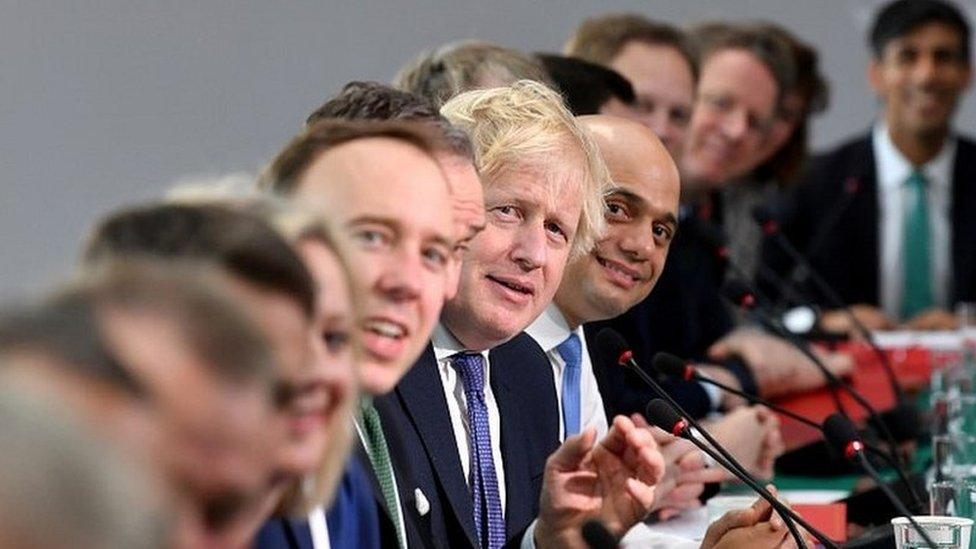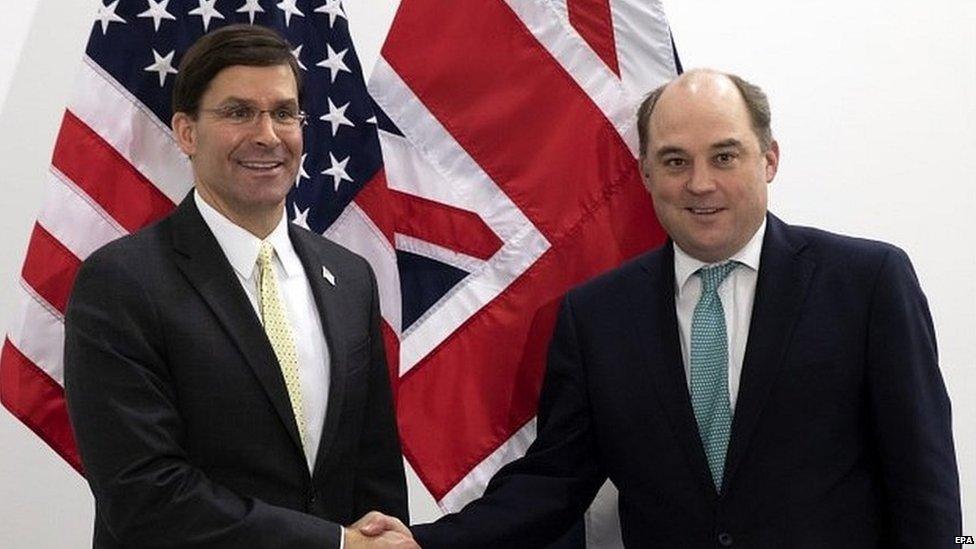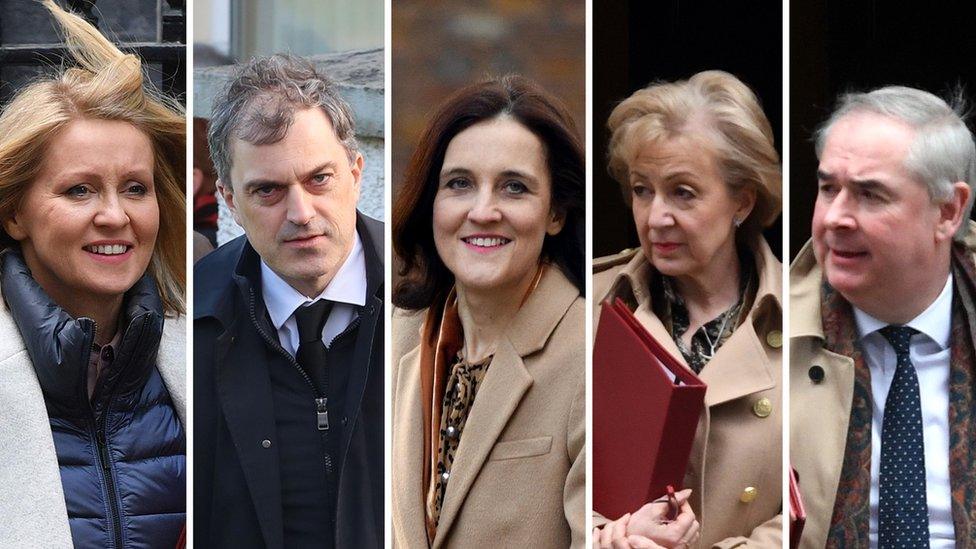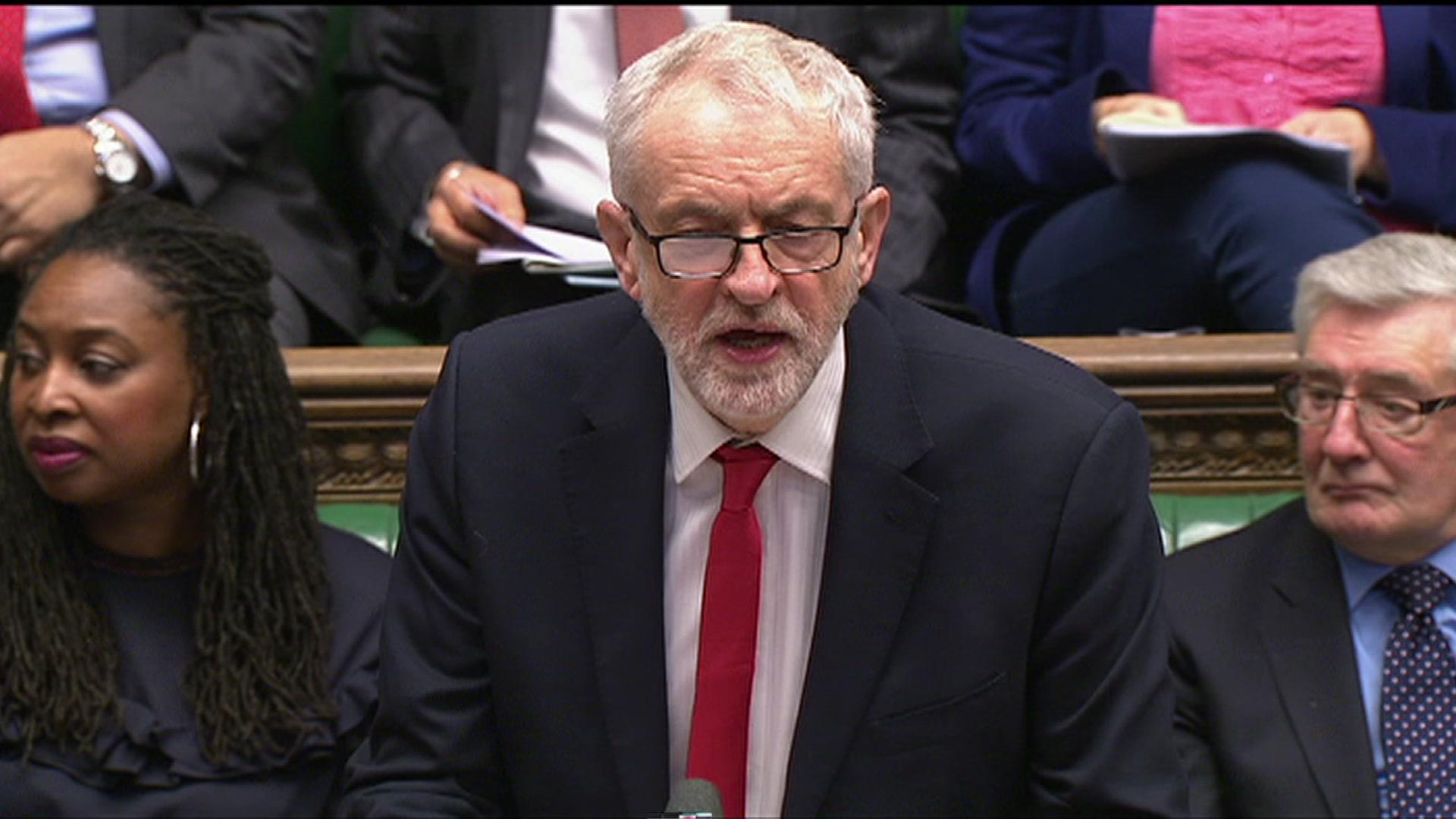What can we expect from Johnson's cabinet reshuffle?
- Published

"Reshuffles go wrong more often than they go right."
So says one seasoned politician who was in the cabinet for many years, regaling the time when they refused to accept the job that was pressed upon them for two full hours by the then chief whip, who may as well have been shouting into an empty cupboard.
However powerful prime ministers are - and the current one is pretty much up there (for now) in the grand scheme of things - reshuffles are not a series of individual acts.
They are the culmination of dozens and dozens of decisions, woven together in the hope of conveying a coherent political front.
They are too, which has not always been front and centre, the way in which prime ministers can build the team of protagonists who they hope can drive through the changes they want to make effectively without too much grumbling, too much protest.
And given it's politicians we are talking about here, too much show-boating or vanity of their own.
Their relative success or failure on the big actual reshuffle days is down however to the individual reactions of the ministers or about to be sacked ministers, who are involved.
A senior figure from a recent administration told me how a cabinet minister had been demoted by the then prime minister and cabinet secretary but was refusing to accept the new reality.
They were sent into another office in Number 10 where they continued to argue the case, eventually to accept that their only option was to leave Number 10, stick a smile on their face and pretend it was the job they had always wanted if they wanted to stay in the cabinet at all.
The source who'd been lumbered with having the second go at the demotion then watched on Downing Street's TV screens as the minister marched down Downing Street wearing a rictus grin for the camera - job done.
Another legend of reshuffles relates to the occasion when the post-it note that held a loyal and respected MP's name fell off the board where the moves were being worked out (think like a game of chess with more moving parts, or the bit in an American detective drama where names of victims and suspects are scrawled on pieces of paper and moved around to make connections, without the violence of course).
The reshuffle was done, the team complete, all the posts had been filled. Back slaps all round.
Except only then it was realised that the poor, hard working and crucial lieutenant of the leader had been left out completely.
Leaving him out simply could not stand, the story goes.
So a job was literally made up, not attached to any government department, or more diplomatically, 'created', for him to do until the next reshuffle when he became a proper minister.
There are other warnings too, it's even suggested that Margaret Beckett was made foreign secretary by Tony Blair as an unintended consequence of how the dominoes all fell during the hiring and firing.
And in true Westminster pantomime style, one government only narrowly avoided creating a department that would have had the acronym P.E.N.I.S, it's been claimed!
Try that on your letterhead.

Putting aside the big or comic mishaps of the past, the point is that however careful the planning, however optimistic Number 10 is about sending a swift, firm, message with this first post-election reshuffle, it is not entirely in their hands.
Ministers have to accept the promotions or the demotions they are given.
If one refuses, that has knock-ons for the whole shebang.
And unlike the reshuffle when Boris Johnson took over from Theresa May where 15 people were sacked in the space of about half an hour, so eager was the PM to claim this was an entirely new government (despite the Tories having been in charge for nine years), this is not likely to be a Valentine's Day Eve massacre.
Nor is it likely to be a truly historic overhaul of the shape of Whitehall, despite a lot of bold talk earlier on about changes to MOG - a terrible acronym, short hand for a popular drinking hole in Westminster but also 'Machinery of Government'.
There have been debates about whether to incorporate the Foreign Office and the Department for International Development but it sounds at this stage unlikely to come to fruition, although it may yet happen.
There were conversations about even scrapping the Department for Culture, or combining the Home Office and Justice Department, and sending rather a lot of ministers for the exit.
But overall it doesn't seem at this stage like it will be a dramatic big bang.

Defence Secretary Ben Wallace said he hoped he was "qualified" to remain in the job
There will be an emphasis on bringing forward the next generation, particularly of women ministers, and it's likely that the overall size of the cabinet will be cut.
It doesn't seem that all of those who have been touted for the door will actually be sent that way - whether Andrea Leadsom, Ben Wallace, Geoffrey Cox or others.
The composition of the cabinet matters hugely of course - the blend of different strands of the Tory party, levels of experience, imagination, or unthinking loyalty to the prime minister.
The cabinet are potentially one of the only real brakes on Boris Johnson - particularly when the government has an enormous majority.
It's due to start early, with the sackings first, possibly in the Commons away from the cameras, then the Downing Street walk of hope for all of the contenders.
But by the end of reshuffle day, you can expect less of a bold new world order in the shape of the government, but a government that is determined to stay for the long haul.
That's unless, of course, as Mr Johnson's predecessors have so often discovered, it all goes terribly wrong. Careful with the post its.
- Published13 February 2020

- Published14 February 2020

- Published12 February 2020

